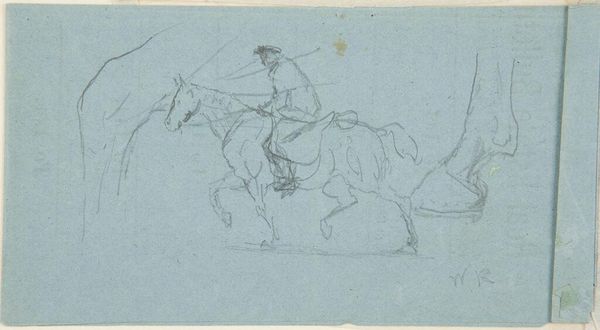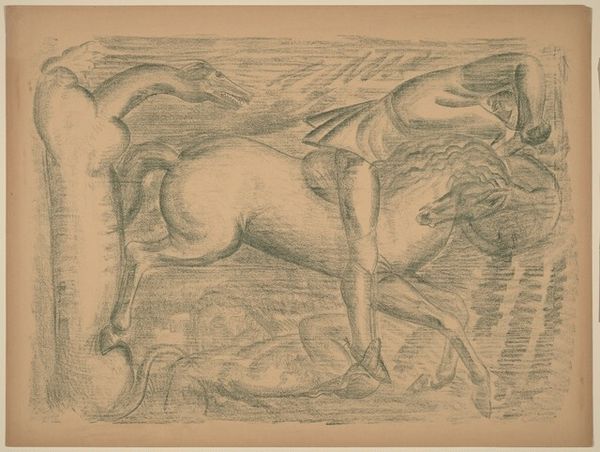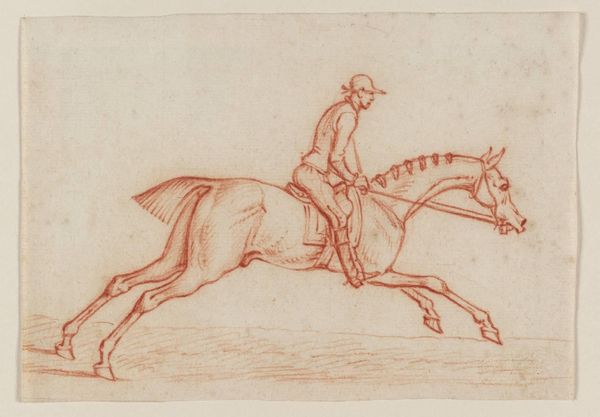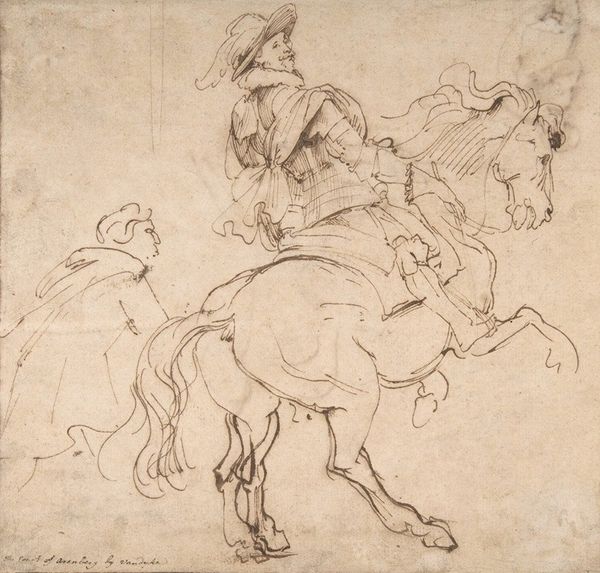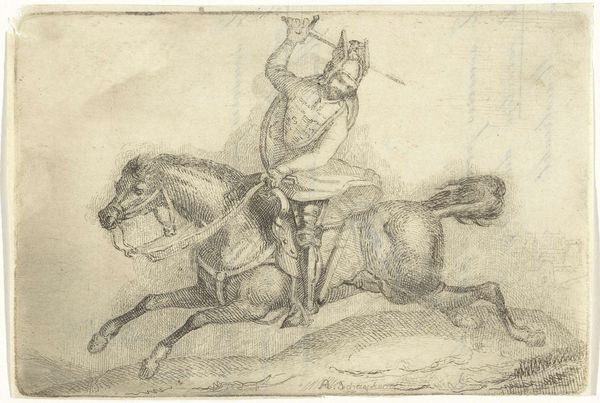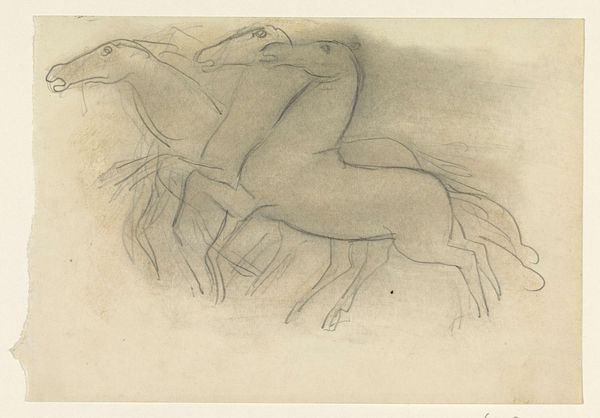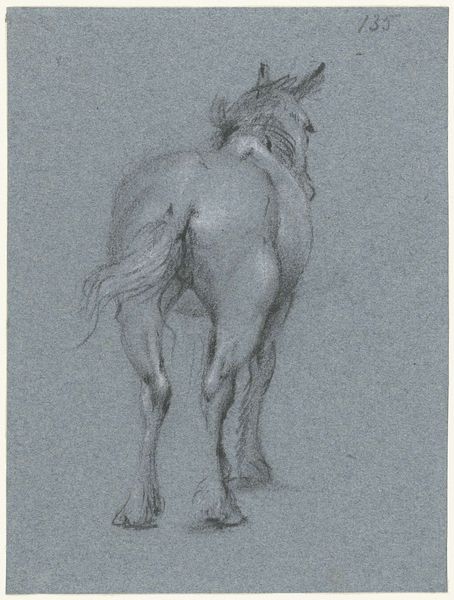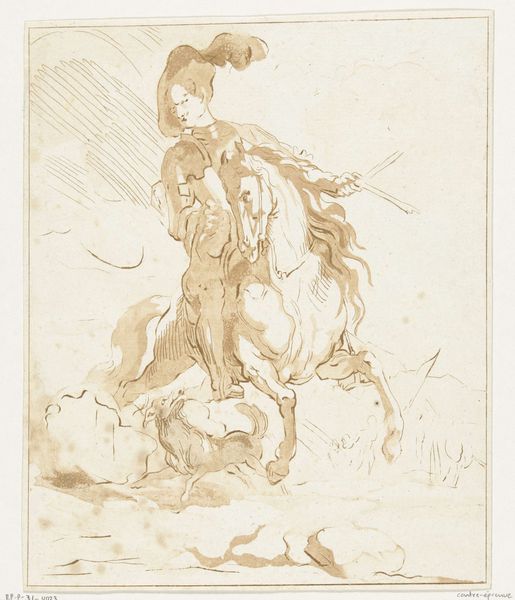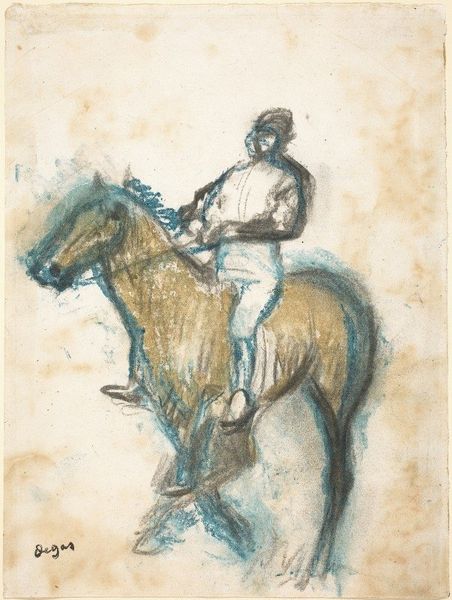
drawing, pencil
#
portrait
#
drawing
#
pencil sketch
#
landscape
#
charcoal drawing
#
figuration
#
form
#
11_renaissance
#
pencil drawing
#
sketch
#
pencil
#
horse
#
men
#
line
#
portrait drawing
#
history-painting
#
italian-renaissance
Dimensions: 18.8 x 15.2 cm
Copyright: Public domain
Editor: We're looking at Leonardo da Vinci's "A Study for an Equestrian Monument," created around 1490 using pencil. The dynamism captured in this sketch is incredible; you can really feel the energy of the horse rearing. How do you interpret this work, focusing on its formal elements? Curator: The most striking aspect of this work is da Vinci’s mastery of line and form. Notice the hatching and cross-hatching. How does the density of lines affect your perception of the horse's volume and musculature? Editor: It's amazing! The darker areas really make the horse feel three-dimensional, even though it’s just a sketch. The lines create such a strong sense of depth and mass. Curator: Precisely. Also, consider the composition. The upward thrust of the horse is counterbalanced by the implied horizontal of the rider's arm, creating a visual tension. Observe how da Vinci uses implied lines to guide the viewer's eye, even in unfinished areas. What effect does this have? Editor: I think it pulls you in; your eyes fill in the gaps and participate in the creation of the image. It's engaging rather than static. Curator: An excellent point. The sketch's unfinished quality underscores the dynamism and movement; It is about potential energy rather than resolved form. Editor: Seeing it this way makes me appreciate how much the form contributes to the work’s overall energy and power, even beyond the subject matter itself. Curator: And that understanding comes from a careful analysis of the elements within the artwork. By considering how these elements operate, one discovers how it is affecting how we feel, how we react.
Comments
No comments
Be the first to comment and join the conversation on the ultimate creative platform.




